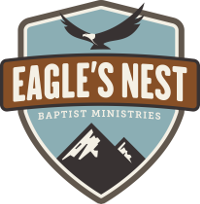
Annual Approved Driver & Vehicle Form
Please be reminded that we are not in the business of rendering legal or safety advice; as such, all materials and suggestions should be reviewed with your professional before use. We feel that the more you work with and check your possible risks, the better protected your organization and people will be.
Owned vehicles and drivers present some interesting challenges today for themselves and for your organization. It is critical today, that only approved vehicles and drivers are allowed for your sponsored activities. Litigation for this area has risen to an alarming rate for churches and schools. Here are some suggested guidelines for your review for the peace of mind of your organization and for your drivers. Please remind the driver that their liability actions could cause the loss of their driving privileges, as well as cause litigation against the organization. Have a qualified approved driver list on file with our office and your office, and NEVER deviate from the list.
THE PURPOSE OF THIS AUDIT IS TO REDUCE ORGANIZATION RISKS AND TO PROTECT THE ORGANIZATION FROM ANY ISSUES OF NEGLECT THAT ANOTHER MIGHT TRY TO PROVE.
1. Does the driver have a qualified driving record? Drivers must have no accidents and no more than one speed or other moving violation in the last thirty-six months. Anything more than one moving violation is considered a poor driving record today. Have you checked the driver's driving record? This can be done by checking the governmental links for your state provided for such info on our web site. The Ohio link is http://www.dmv.org
2. Is the driver a qualified age? All drivers should be between the ages of twenty-five and seventy. For organizational sponsored activities? There can be one exception: if the driver is the pastor or youth pastor for the church, they are acceptable as low as age twenty-one. If an exception is necessary, please contact us.
3. Does the driver have any physical conditions that could affect their driving abilities? Certain medications could cause a problem, or certain physical conditions could greatly increase the risk for a driver to be able to transport a vehicle load of people.
4. A potential driver's character/personality could increase the risk to your organization. People who are easily angered know they are, and you may know it too. People who have stable personalities make better drivers.
5. A potential driver who is dealing with some types of trauma or relationship issues could increase the risk to your organization. The loss of a spouse or other trauma can make a person careless in their driving abilities: this is a known scientific fact.
6. Has the potential driver had at least five hours of driving the vehicle with another person so that they feel at ease with their driving ability while transporting others?
7. Do the driver and vehicle understand the suggested adult to child ratio? A vehicle will provide no safeguard protection if there is only one adult, and worse, just two people total. Cars, Van, and buses present different numbers with different risks but the number should still be check as noted for the ratio of children to adults. The risks can be high today; safeguards are important. It is best to have two adults (over age 18) unrelated for 20 and under children, and an added adult for each 10 there after (an adult driver assistant or assistants is/are necessary to deal with any distractions or other needs so that the driver can concentrate on driving).
8. For longer trips, the adult assistants may want to consider appropriate activities for the passengers to keep things in line as the trip progresses (travel games, videos, etc. and light snacks or drinks).
9. Are safeguards in place for seating arrangements, especially if the vehicle is a van or larger vehicle? It is best to have two adults and one additional adult for every twenty over the first twenty. The adults should be in the middle, front, and rear of the vehicle, with each sex seated separately for the least risk today.
10. Has a parental release form been signed for day or longer trips? (for suggested forms, please note the trip and vehicle release forms on this site)
11. Has the vehicle been maintained according to the manufacture's suggestions so the vehicle is in safe operational condition? The maintenance records must be kept for the whole time you own the vehicle, as paper or as digital.
12. Before each trip, does the driver do the suggested trip vehicle inspection? (This must be completed, dated, signed by the driver, and kept on file for seven years) Note the suggested vehicle trip inspection form on this site.
13. Is the vehicle a safe vehicle type for the specific need it is to be used for? 15 passenger vans are no longer considered a safe vehicle for passenger use. This leads to an important side issue: since 15 passenger vans are known to be unsafe, allowing your organization opens possible risks of litigation to the organizational officers, employees and leaders. On August 3, 2004, Ford Motor Company and Enterprise Rent-A-Car Company were sued for this very issue and lost, just like your organization can now (they allowed a 15 passenger van to transport people when they knew it was not safe; a resulting accident killed several people).
14. Is safety equipment in the vehicle and in good working order? Are there at least two reflectors or flares, a tire jack if the vehicle is an auto or van, a cell phone for emergencies, phone numbers handy for vehicle repairs and organizational contact, a first aid kit, some motion sickness bags, an ABC fire extinguisher, jumper cables, and the necessary spare parts like a spare tire, temp. tire fix/canned air, water hose and fan belt. What to do and who to call in the event of an accident or broken window: toll free number for accidents or broken windows for our clients: 1-888-748-4326; call 24/7 nationally. It is best that the driver or other adult knows CPR. Review the accident and breakdown procedures below.
15. Have the weather and road conditions been checked for day and longer trips so that you are prepared if perhaps the trip should need to be postponed or delayed?
16. Have directions and maps been reviewed so that they are fresh in the driver's or his/her adult assistant’s mind for a well planned route? (check for construction zones and rush hour areas and avoid if possible)
17. For trips, have stopping points for meals and such been checked out for safety and proper accommodation? (a count should be done by one of the adults whenever a person exits or enters the vehicle to be sure no one is left behind)
18. If you are caravanning, make sure it is understood who is to be the lead vehicle and the rear vehicle, with each having a walkie-talkie or CB since cell phones do have their limits.
19. All passengers should be in their seats with seat belts on, and all passageways should be clear, with any possible luggage properly stored. The vehicle should not move out of park until all are seated with seat belts on and the passageways clear.
20. Does the vehicle have a proper limit of Bodily Injury & Property Damage Liability, and Un/Underinsured Motorist protection? Minimum suggested limits should be at least:
Bodily Injury Liability $1,000,000 single limits.
Property Damage Liability $1,000,000 single limits.
Un /Underinsured Motorist Protection $1,000,000 single limits.
An umbrella policy with at least $1,000,000 is also suggested (for most organizations, yearly rates start at $450).
21. Suggested breakdown procedures :
- Park the vehicle as far from the traveled portion of the road as possible. Turn on the four-way flashing hazard lights. Place reflectors and/or flares 100 feet and 200 feet to the rear of the vehicle.
- Keep the passengers in the vehicle in their seats unless vehicle is on fire or poses other dangers to the passengers.
- Assess the situation and determine the best option to make needed repairs.
- Call for help using a cell phone, or on another phone if in a non-working area, or ask a passing vehicle to call for help. Also, call the organization contact so that they know you will be delayed for a time.
- If repairs cannot be timely made, transportation arrangements must be made for all vehicle occupants.
22. Suggested procedures if bad weather is presented:
- Remain calm, seek a safe place to stop, and get the occupants to shelter. Do not try to outrun a tornado. A freeway bridge overpass can be a possible safe stop during a windstorm. Seek shelter by leaving the vehicle and moving up under a bridge.
- Be sure all are accounted for if you leave the vehicle.
- If you encounter road flooding, do not attempt to drive through it; find another route.
- If the roadway becomes impassable from ice, snow or water, seek a safe stopping place.
- Call the organizational contact to state situation and status.
23. Suggested procedures when accidents happen:
- Accident packets should include items from the above #10 point.
- Driver should stop immediately and determine damage after engine is turned off. The assistant driver should check passengers for any injuries. Avoid obstructing traffic or endangering anyone more if possible.
- Place emergency reflectors and/or flares 100 feet and 200 feet to rear of vehicle.
- Call on cell phone for needed help.
- Aid any injured and see that they receive medical attention as soon as possible.
- Unless they are in immediate physical danger, do not attempt to move the injured person(s).
- If you are trained in first aid, administer first aid to the injured if needed.
- Collect info on the accident, time, date, place, those involved, and put together a brief description of the event.
- Find witnesses, obtaining their names, addresses, and phone numbers.
- Report the accident to local police.
- Call the organizational contact with status and info.
- Call insurance agent and/or insurance company. If you have a GuideOne policy, call toll free: 1-888-748-4326. Agent phone for claims is toll free: 1-877-471-7997.
- Make arrangements to transport the non-injured and minorly injured passengers, if medically able to be transported, as directed by the organizational contact and/or medical provider.
- Make arrangements to move the vehicle as directed by organizational contact.
24. Has the approved driver reviewed the driver training course provided by Drive One within the last 12 months, and have they read and understood this form?
This yearly Approved Driver Form should provide for the driver's signature and the date, and should be kept on file for at least seven years.
Please note that this information is not given as legal advice; please consult with your legal counsel for any necessary reviews.











